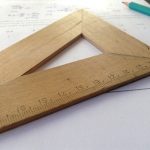All solutions here are suggested. Mr. Teng will hold no liability for any errors. Comments are entirely personal opinions. I will not be doing much formatting in this post.
Q1 [Maximum marks: 4]
Discriminant ![]()
![]()
![]()
![]()
![]()
![]()
Q2 [Maximum marks: 5]
(a)![]()
![]()
![]()
(b)![]()
![]()
Q3
Q4
Q5
Q6 [Maximum marks: 4]
Let ![]() be the height of a sunflower plant, in m.
be the height of a sunflower plant, in m. ![]()
![]()
![]()
![]() — (1)
— (1)![]()
![]()
![]() — (2)
— (2)
Using GC, ![]()
Q7 [Maximum marks: 4]
Observe that all the letters are distinct. Aside from P and G, we need to ![]() letters to put them between P and G.
letters to put them between P and G.
Number of ways to form the group “P X X X X X G” with arrangements ![]()
We then need to arrange the group formed with the remaining 2 letters.
Total number of ways ![]()
Q8 [Maximum marks: 8]
(a)![]()
![]()
![]()
![]()
![]()
![]()
(b) It is the probability that both events A and B do not occur.
Observe by drawing a venn diagram that ![]() .
.![]()
(c) ![]()
![]()
Since ![]() , events A and B are not independent.
, events A and B are not independent.
(d)
Q9 [Maximum marks ] – CLT Topic
Q10 [Maximum marks: 11]
(a)
(b)
Required probability ![]()
(c)
Required probability ![]()
(d)
Required probability ![]()
11 [Maximum marks: 11]
(a) Let ![]() be the number of orders delivered within 24 hours, out of 10 orders.
be the number of orders delivered within 24 hours, out of 10 orders. ![]()
(i) Required probability ![]()
(ii) Required probability ![]()
(b) ![]()
![]()
Let ![]() be population mean delivery time.
be population mean delivery time.
Test ![]()
against ![]() at 5% significance level.
at 5% significance level.
Under ![]() ,
, ![]() approximately by central limit theorem.
approximately by central limit theorem.
From GC, ![]()
Since ![]() , we reject
, we reject ![]() and conclude that there is sufficient evidence at 5% significance level that the mean delivery time is less than 12 hours. Thus, manager’s claim is supported by the data.
and conclude that there is sufficient evidence at 5% significance level that the mean delivery time is less than 12 hours. Thus, manager’s claim is supported by the data.
(c) Since the sample size ![]() is sufficiently large for the sample mean distribution of delivery times to be approximated to a normal distribution by central limit theorem, it is not necessary to assume the distribution of the deliver times.
is sufficiently large for the sample mean distribution of delivery times to be approximated to a normal distribution by central limit theorem, it is not necessary to assume the distribution of the deliver times.
12 [Maximum marks: 13]
(a)![]()
![]()
![]()
![]()
(b)![]()
![]()
Let ![]()
![]()
(c)
Let ![]() be the interval timings, in minutes.
be the interval timings, in minutes. ![]()
Let ![]() .
.![]()
![]()
![]()
![]()
(d)
Let ![]() be the second half duration, in minutes.
be the second half duration, in minutes. ![]()
![]() .
.
(e)
The events found in (d) is a subset of the events found in that of “the two halves of the concert last for a total of more than 80 minutes”.

